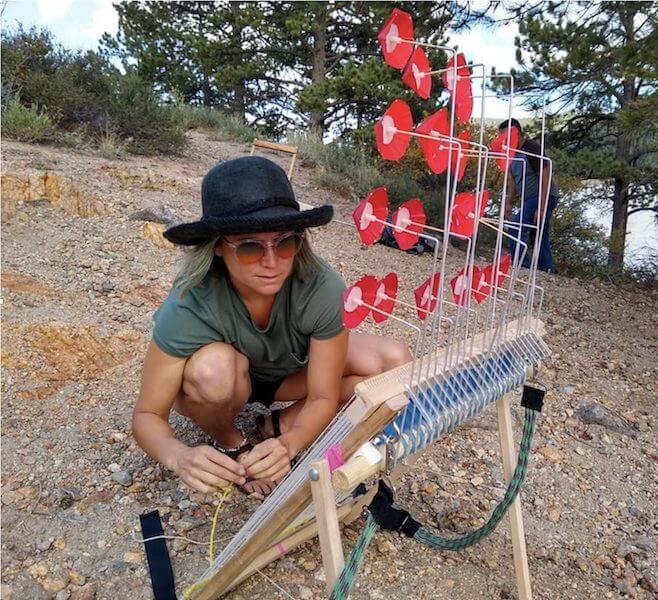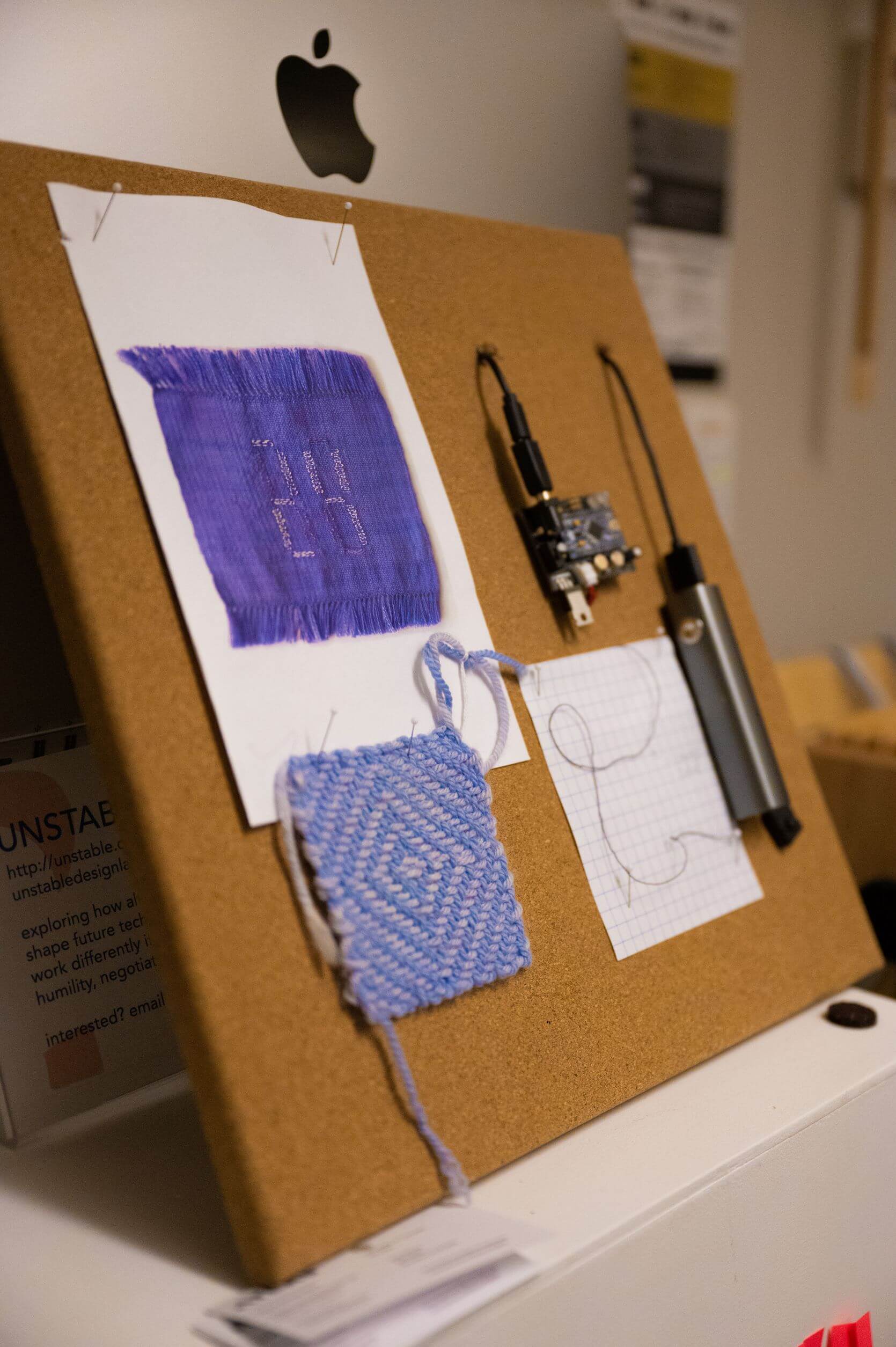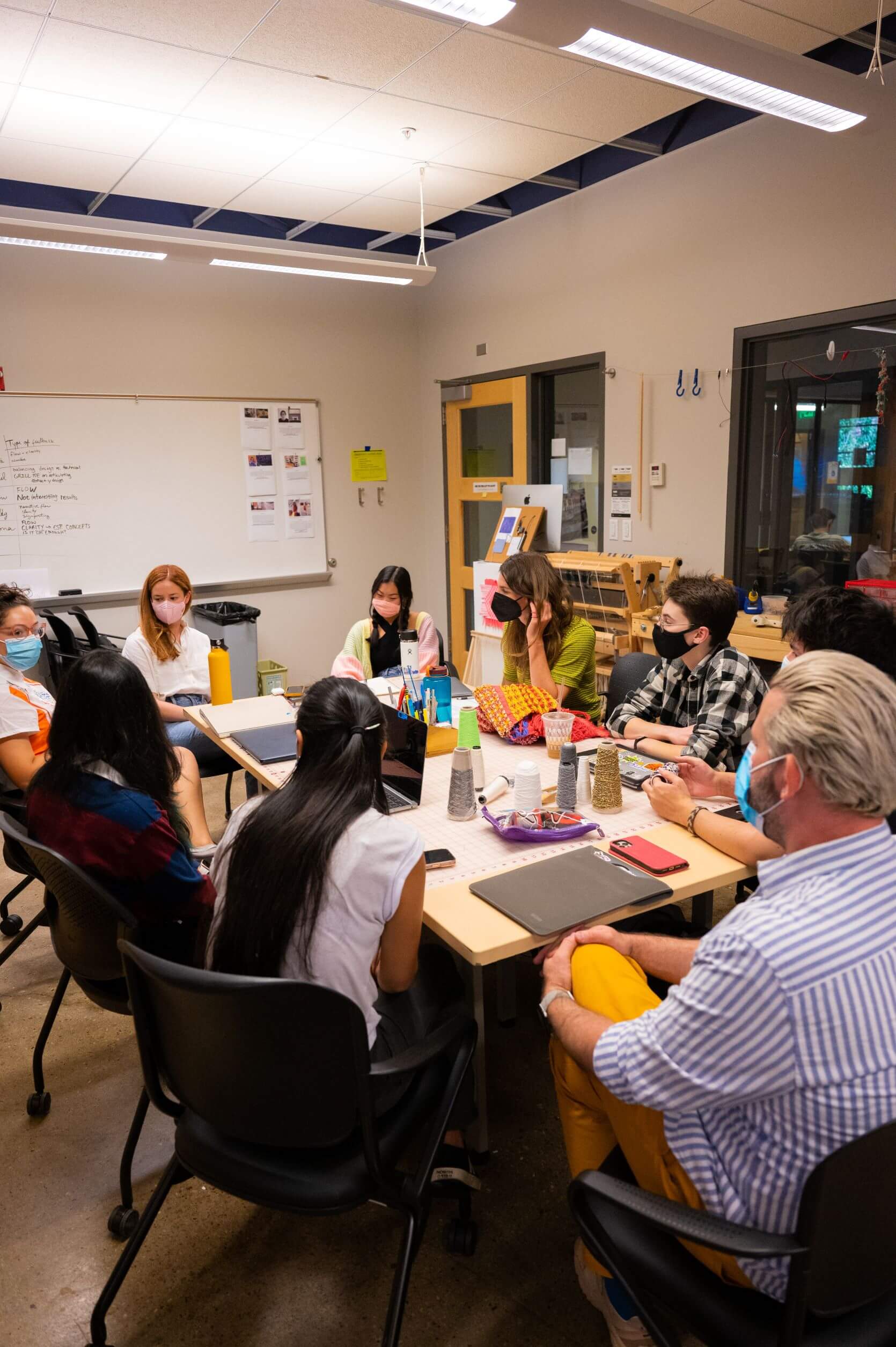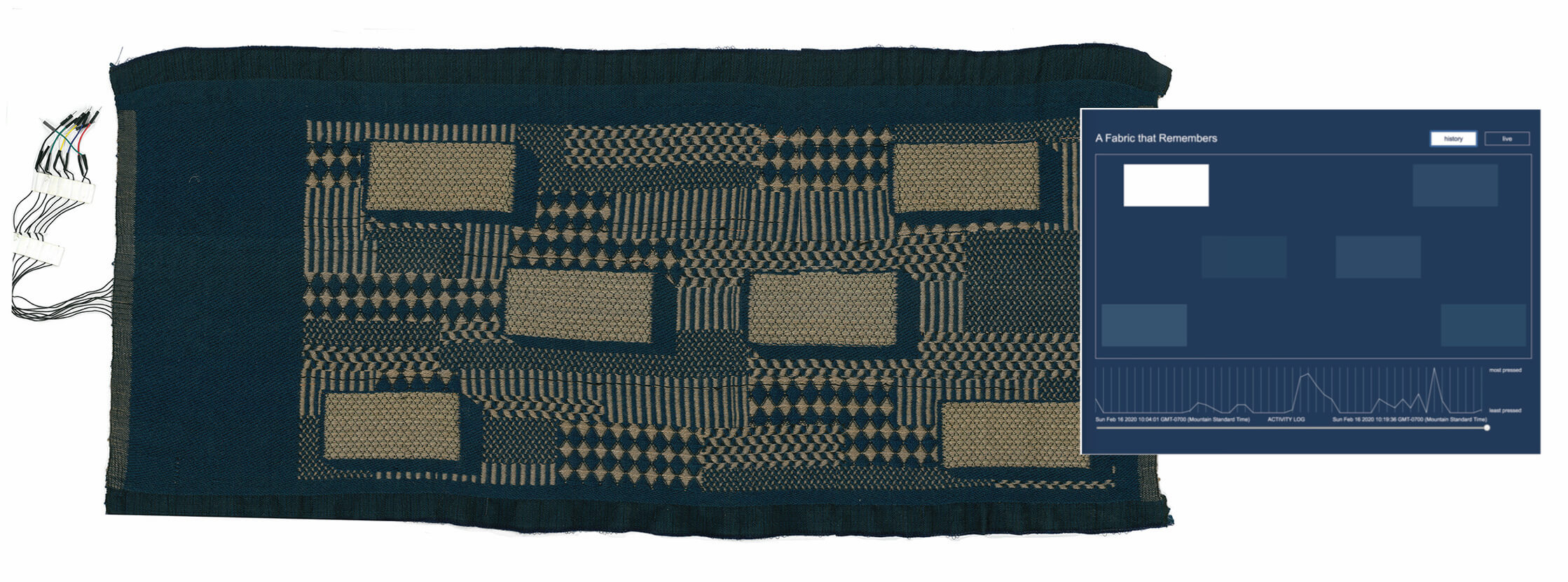Tell us a bit about yourselves and what you do.
The Unstable Design Lab is a collaborative community of undergraduate, graduate research students, and artists in residence led by Laura Devendorf. We focus on issues concerning the design and production of textiles and provide open source tools related to what we call “experimental weaving”.
What is your origin story?
As a research lab located in a university setting, our origin coincides with Laura beginning her position at the ATLAS Institute at CU Boulder. Laura wanted to use it as a space to explore themes of uncertainty and its relation to technology and that evolved into a deeper focus on weaving as both a metaphorical lens to understand human-technology relationships as well as a method of making that we could play with in interesting and conceptual ways. We aim for the work to span art and engineering and intersect in unexpected and unplanned ways that surface alternative values in design.

How has being housed in a university (University of Colorado at Boulder) affected your work, and what are some of the benefits of working in an institutional context?
We think the university setting benefits the lab, as there are some people who are constants in the lab for several years (PhD students), and others who come in and out (visiting artists, professors, undergraduate students). The influx and outflux of ideas, perspectives, and values makes the lab a growing and evolving space for creating that’s grounded in its core principles and beliefs. It also provides an interesting framework to push against as well as opportunities for collaboration that might not happen otherwise–with astronautics professors, scientists, etc. I think the main impact of the university orientation is the outcomes of the lab, which often include publications at academic conferences. These communities are strong and supportive, but can be exclusive to those with the support of universities or industry. As such we also try to devote effort to more public scholarship and engagement.
How can design, as mentioned in your manifesto, ‘help people imagine alternative futures with alternative politics’?
Design is a form of storytelling and stories can help make imagination concrete in specific ways. By making stories, in the form of objects and tools, we hope to bring forward different questions and opportunities relating to technology. For example, we can imagine what an economy of e-textile repair and exchange can look an embody those in tools and techniques oriented around repair and reuse.

What are the day-to-day activities of the lab?
Usually there are people working on their personal or group projects in different areas of the lab. Some can be weaving using the TC2, others can be sewing, working on the main table in a crafts projects or the Ph.D. students can be found in their office working on their computers. We have a weekly meetup of all the lab members focused on research topics, project management or brainstorming. Most of the time, we aspire to just be side-by-side making and writing and seeing what emerges.
Could you talk about AdaCAD and what it entails?
AdaCAD began from a recognition that in the hype around 3D printing and fabrication that took place among academics about a decade ago, there was very little investigation or inclusion of textiles as a form of making. Yet, we came to learn that textile structures are these incredibly complex mechanical systems that can be manipulated and designed in ways that give rise to new possibilities for sustainable design, for instance, the ability to reuse and repair circuits or the ability to design and making zero-waste 3D forms. AdaCAD is intended to be a design tool to both bring recognition to the values inherent in woven structure (and weaver’s knowledge), as well as a space to generate new forms of woven structures through computational or algorithmic processes. It has become a bit of a test bed for how software design is inherently political and how we might center the voices of craftspeople in the development of “innovative” tools and systems.

What are some of your favorite ‘provocations’ the lab has done, and why are they called provocations?
We agreed a few years later to use the term “provocation” rather than “project” to more concretely situate the work as questions of possibility and investigation. Thinking of the work being done in the lab as a provocation as the projects often ask viewers to think differently–can a textile have memory?–about how something is made, about how we interact with it/objects in our lives, about what materials we are creating with.
In some ways our design software (AdaCAD) and the experimental weaving residency we host are provocations by probing at the value of craft, which is not traditionally thought to have a footing in math or science but is, in fact, deeply rooted to these systems. Other projects, like the wind loom, try to make more visual provocations by exploring what systems would look like if we more radically embraced chance in design, in this case, letting the wind set our weaving patterns. The Research Lab of Ambiguous Futurology is a participatory provocation led by PhD student Sasha de Konnick which asks us about futures we envision and results in the production of garments for those futures. The Biofoam research explores the design possibilities of a material that dissolves in warm water at their end of life; we don’t always need to use materials that last forever, they can be seasonal/stationary/ephemeral.
What is the experimental weaving residency, and how did Covid affect its running?
The residency is for experimental weavers that ask themselves what can weaving really be? What makes up a piece of cloth? What structures are possible within cloth? It is funded by the National Science Foundation under a broader program that looks at how we can include craftspeople in innovation practices and what structures, tools, and systems can support more integration between these communities. Like many programs, COVID caused us to delay the residency by one year, because we didn’t feel that we could safely host someone in the space and working side-by-side was critically important to us. We are happy to have it up and running again and just finished our third call for residents.

What does the lab look like?
It’s on the second floor of the ATLAS Building on the CU Campus, next to other labs that make bio-materials, machines, and brain-computer interfaces, for instance. It is one big room with a shared common table and lots of looms and yarn. It has attached offices where we can make our own private messes. The goal of the space is to be a more generative space as well as a playful environment for spending time with an idea.
The lab has done a lot of work with ‘e-textiles’ or ‘smart fabrics’ – do you see these becoming more commonplace in the future?
…yes and no. Yes, the industry seems to be wanting them to be a thing, yet, they are perpetually a few years away due to the inflexibility of the current industrial manufacturing landscape. We are fearful of an industrial/commercial e-textiles boom as it poses some serious sustainability threats as well as a closer connection between technology and the body (for better or worse). Part of the work of the lab then is to try to imagine ways for the industry to change towards something different that more deeply embraces some of the values and possibilities we see in the actual practice of weaving electronics: the connection to materials, the ability to make zero-waste objects, the reusability and mendability of textiles vs. etched circuit boards. At times it feels a bit naïve, but we operate from a perspective of hopefulness.

What does collaboration or collaborative mean to you/the lab?
We collaborated on this question with each member providing an answer:
Being porous to multiple perspectives, creating spaces and structures that place equal value on those perspectives.
Collaboration is a collision of ideas and perspectives both personal and categorical. To collaborate is to seek understanding in realms beyond one’s purview.
Collaboration means being open to sharing your ideas and open to receiving ideas. It means being able to change and form ideas and projects with others. Collaboration is anti rigidity. Working together, and working in proximity. Community.
Collaboration leverages the unique perspectives of individuals in the lab to yield something entirely new. It nurtures growth as well as fosters a community and shared sense of belonging. We all have something valuable to contribute.
Collaboration means being open to all ideas no matter what. When someone is sharing, you’re giving them your full attention and respect whether you agree or disagree with what they have to say. Collaboration is also being curious about other people’s work and learning from them. If someone has asked for help or assistance, and you have free time, collaborate and help them with it!
In our lab we try to combat gate-keeping and barriers created by the cultural construction of disciplines. Through collaboration we hope to not just create new things but also new ways of being and approaching the connections between art, craft, design, science, fashion, etc…
Collaboration is when the final outcome of a project is dependent on the communication of the group. We try to work with as many different perspectives as possible to gain the best understanding of our situation that we can.
Collaboration is to be able to share what ideas you have and gain constructive feedback. As a team, the members of the lab always work towards helping each other view things from a different perspective. We all come from completely different backgrounds which makes working together so interesting. This sort of collaboration also helps us stay stuck for less time because we are always talking, brainstorming and putting in an active interest in each others constant progress.
It means joining efforts for one same purpose. Distributing the work in a way that everyone brings their expertise in the table to accomplish something. Working in a balanced way.
Do you have any upcoming projects or programming you can share with us?
Yes, we are hosting a series of talks with experimental weavers who will tell us about their practices and approach to experimentation in craft. https://unstable.design/experimental-weaving-talks/ . PhD Sasha de Koninck will be presenting a solo show at Antioch University, and offering a talk with the show: https://www.suartgalleries.org/events/artist-talk-with-sasha-de-koninck Outcomes from our first experimental weaving residency will be featured at an upcoming exhibition at the Center for Craft in Asheville North Carolina.
We also have our students working on research papers for publications in the area of human-computer interaction. These include studies of improvisational attachments to looms, bio-material yarns, and greater outreach with the Denver/Boulder community. If there are folks curious about a PhD or Masters associated with the lab, they can learn more about the application and selection process at: https://www.colorado.edu/atlas/academics/grad
Interview Conducted by Milo Christie
